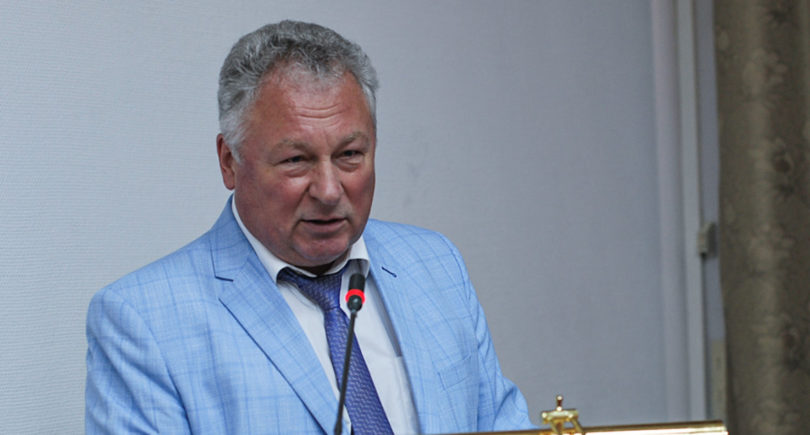
Opinions Industry steel production 2824 24 January 2024
Companies have adapted to new conditions, but new problems constantly arise
At the beginning of the war, many enterprises, including steel plants, stopped production. Initially companies did not understand how to continue operations during hostilities. But in the beginning of 2022 summer, enterprises began to resume production. Industrial companies gradually adapted to new conditions, as a result we see some recovering: if in March 2022 index of industrial production was 46.5% y-o-y, in September 2022 this indicator reached 60.6% and then slightly decreased to 56.1% in December.
Of course, industrial production cannot return to pre-war level. On the one side, some plants were destroyed and occupied by Russian military forces. On the other side, blocked seaports limit potential to increase industrial production. The sea corridor is not a full-fledged substitute for the pre-war work of ports.
We may say that industrial sector adapted to work during the war, but in fact new problems constantly arise and companies will have again to spend time to find their solutions. Fluctuations of industrial confidence indicators reflect all these facts. Indicators published by National Bank of Ukraine showed that industrial confidence varied between 49 and 51 in April-November 2023. In June, September and October industrial expectations were quite good (50.1 and 49.6 accordingly). In December index of industrial confidence significantly declined – to 46.9. It is explained by border blocking in Poland and rising fuel prices.
Main challenge in 2023 remained the same as in 2022 – it is safety of production facilities and personnel. In war conditions, no one can be safe. Shelling leads to disruptions in production, logistics, people’s livelihoods. In particular, last year the Danube ports came under fire. In 2022 Danube ports partially replaced Black Sea ports for the export of grain, iron & steel products to the EU, that is why damages of Danube ports are quite painful for Ukrainian economy.
The second challenge is connected to logistics. As we have already mentioned, from the beginning of the war, seaports have been blocked by Russian military fleet. Such situation caused increased delivery time and 3-5 times increased logistic costs. The capacity of border railway crossings is limited, that is why railcars are accumulated in lines in front of border. The main problem is the different rail gauges in Ukraine and Europe (in the Ukrainian railway system, the gauge is wider than in Europe). The peak pressure on the Ukrainian railway system was in April-May 2022 – at that time, grain cargoes began to be actively transported to the EU.
To partially solve the problem, the “grain deal” was signed in July 2022. It unblocked the export of grain and other food products from three Ukrainian ports: Odessa, Chornomorsk, Pivdennyi. “Grain agreement” limited the flow of grains cargo to the railway, so Ukraine prevented the total collapse of the transport system.
Last year, Russia pulled out of the grain deal. Therefore, the grain route was replaced by a new corridor, which was used to export not only grain cargo, but also iron & steel products. At the same time, the capacity of the new corridor is also limited, and the ships are not completely safe. Moreover, in 2023 polish carriers began blockade of the border with Ukraine, so new problem appeared.
We expect in 2024 logistics problem will remain one of the main challenges for industry. In current conditions logistics limit potential to increase production, especially for steel industry which is now focused on exports to EU.
Significant challenge in the end of 2022 and the beginning of 2023 was interruptions of energy supplies. They were caused by shelling of energy infrastructure. Plants could not fully operate due to power outages. Although from spring 2023 there was no significant energy disruptions, we understand that this challenge is not overcome. The power system suffered significant damage that has not been completely repaired. With a decrease in air temperature, electricity deficit appears in the energy system. The ability of the power system to cope with increased energy demand will depend on the possibilities of importing electricity from the EU and the consequences of Russian shelling.
The beginning of war led to an outflow of labor force from Ukraine. Some workers were mobilized into the Armed Forces of Ukraine. So, in 2022 industrial enterprises faced lack of some specialists. This fact limited the possibilities to resume production. In 2024 the military command plans to mobilize half a million people into the army. No one assessed the economic consequences of such step, although it will negatively affect economic activity.
Specific challenge of 2023 was explosion of the Kakhovka reservoir dam which led to disruptions in water supplies for some industrial enterprises. Several of them were even forced to reduce or temporarily stop production. Over time, water supply problems were solved.
Now the main priority is to survive. For industry it means continuation of production. For government it means continuing to collect taxes to finance the budget. Therefore, we see an increase in the number of tax audits of enterprises and this trend is scary. It does not contribute to support of business and economy in the war times and attracting new investment.
Foreign investments are expected to be critical for reconstruction and integration of Ukraine in the EU. Surely, the main barrier to attract foreign investment today is the war. No one will invest in a warring country, possibly except military projects.
Also, Ukraine has traditional barriers, connected to unfavorable investment climate. For example, legal and judicial system does not protect right of ownership appropriately. Tax and law enforcement authorities put pressure on enterprises. The government constantly seeks possibilities to raise taxes. Permitting procedures are confusing and fraught with corruption. Unfortunately, we expect all these factors will persist after the end of the war.
However, a new factor may be added to them – the issue of security guarantees for Ukraine. Without reliable security guarantees, foreign investors will not invest in Ukraine, realizing that the war with Russia could happen again.
Now Ukrainian government tries to solve some current problems, but we would like to see more done, especially in the field of overcoming logistics constraints, discussion of CBAM delay for Ukraine, harmonization of legislation according to agreements with EU. It could also be good idea not to increase taxes and not to complicate permitting procedures during the war. The future of post-war Ukraine is being laid today, so it is time to make well-founded decisions.




